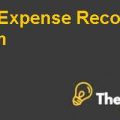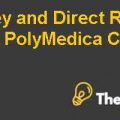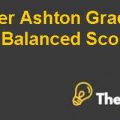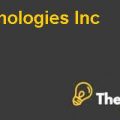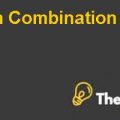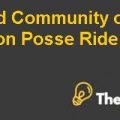
Transactional and Translational Exposures
- a. What is transactional exposure?
Transaction exposure is the risk that an organization becomes exposed to when it has to complete a transaction in currency other than its home currency or base currency.In other words transaction exposure is when an organization has committed to perform a transaction that involves a currency other than the home currency, or base currency and specifically, the risk will be that before an organization can complete the committed transaction the exchange ratio between home currency and foreign currency might change in such a way that the organization has to pay more for the same transaction.
- b. What is translational exposure?
Translation exposure is when an organization or individual has assets, liabilities, revenues or equity in currency other than home currency. In other words organization has liabilities or asset in currency other than its home currency of base currency rate for the purpose of recording foreign assets or liabilities in home currency or base currency.
- c. Should multinational firms, hedge their foreign exchange rate risk? If not, what are the consequences? If so, how should they decide which exposures to hedge?
Since multinational companies operate in more than one country and has to deal with more currency, similarity it has to undertake transactions in different currency more often which will expose the organization to transactional or translation risk, hence, these organizations must hedge their exposure in order to protect steady and predetermined cash flows.
However, if the organization does not hedge its exposure from changes in currency rates, it will change and then it will have to bear the additional cost for the same.
- d. What do you think of GM’s foreign exchange hedging policies? Would you advise any changes?
General Motors’ current policy for managing foreign exchange hedging is that it only opts to hedge its exposure of transaction risk and only 50% of the transaction risk is headed which is prioritized on the basis of higher volume of transactions, but this is not good policy for hedging it will leave the balance 50% of transaction un-hedged exposing the GM with a transactional exposure of foreign exchange risk. Meanwhile GM’s hedging policy is that they do not hedge the translation exposure, which is another deficiency of policy because if they do not hedge their translation risk it could also badly impact the financial results of GM in any financial period. In addition to this the exposure is being managed at regional basis rather than worldwide, centrally managed policy of hedging the foreign exchange risk.
However, the current policy is not a perfect policy because they are leaving their firm exposed to the 50% of transactional exposure risk, meanwhile, this policy should be changed to hedge 100% of transactional exposure and the criterion that only higher value transactions are hedge is another lacking point because the decision to hedge should be based on the volatility of foreign currency involved and if there are more transactions in highly volatile foreign currency than this should be hedge in order to avoid the exchange rate risk. Additionally, the translation risk is not being hedged but this will also impact their financial statement, therefore, this risk should be hedged by using a matching concept which is that GM should try to create foreign liabilities to match with the foreign assets or vice versa. In this way they will be able to avoid the translation exposure without spending money on hedging instruments. At last but most important problem with GM’s hedging policy is that they are managing the hedging on regional basis would better be able to manage on a centralized basis because these enable GM to match the payment and receipt of much of their foreign currencies in internal reconciliation of inflow and outflow of foreign currency and the balancing foreign currency amount should be hedged at central level.
- e. Should GM deviate from its policy in hedging its CAD exposure? Why or why not?
Since GM Canada’s most of the cash flows are in CAD but due to the accounting policy they have adopted the base currency as USD which is higher than the CAD on an overall level. Further, GM Canada hedges its net cash flows of USD and CAD which results in net CAD payment of local suppliers and hedging this CAD cash flow means that waste of resources on hedging unwanted and unexposed cash flows. Because the net payment of Canadian local suppliers would be made in Canada in CAD currency, which is the local currency of Canada, therefore, GM Canada need not to hedge this risk, furthermore, the translation of GM Canada’s USD cash flows is not required because the group’s base currency is USD hence GM Canada need not to hedge the translation risk because they are already in USD currency.Tounderstand this CAD hedging better calculation have been made in the excel sheet ................
This is just a sample partial case solution. Please place the order on the website to order your own originally done case solution.
As multinational firms manage currency risks? Considering transactions and progressive and competitive risks. Description of General Motors' corporate hedging policy, risk management, structure, and how accounting rules decisions impact of hedging. Although the overall corporate hedging policy provides a consistent approach to foreign exchange risks that General Motors must manage, there are times when a company must take into account the deviations from prescribed policies. Describes three such situations: a large exposure to the Canadian dollar to the adverse effects of accounting, the impact of GM when the Argentine currency devaluation widely expected, and the impact of the depreciation of the Japanese yen against the dollar. For an executable table (rates), please contact our Customer Service Department at custserv@hbsp.harvard.edu «Hide
by Mihir A. Desai, Mark F. Veblen Source: Harvard Business School 28 pages. Publication Date: March 1, 2004. Prod. #: 204024-PDF-ENG

